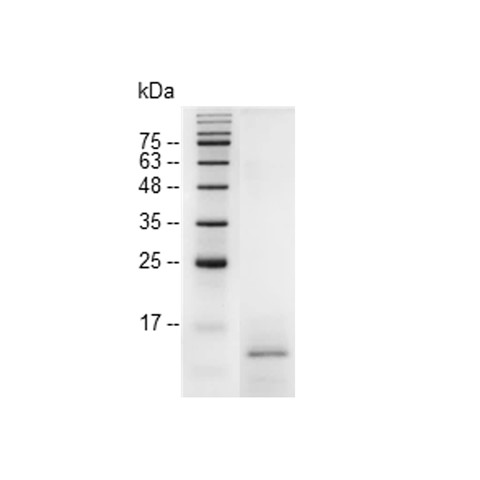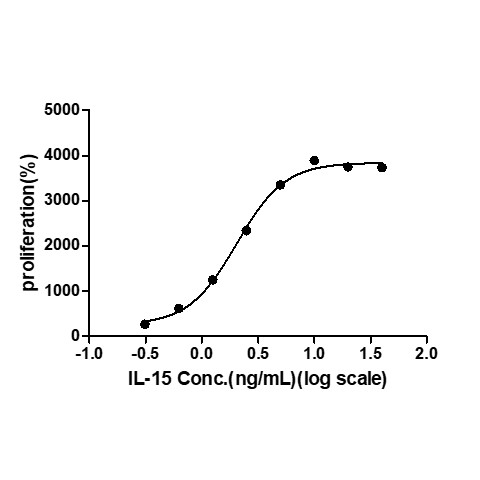| Background |
Interleukin-15 (IL-15) is a 14-15 kDa glycoprotein with immune regulatory functions in many diverse cell types. IL-15 can be constitutively expressed in a variety of cell types stored as intracellular protein in the cytoplasm as well as transport to the cell surface, while only secreted from some cell types including monocytes, dendritic cells, epithelial cells, bone marrow stromal cells, and fibroblasts. As a pleiotropic cytokine, IL-15 mediates the crosstalk between innate immunity and adaptive immunity whose principal role is to kill virally infected cells. IL-15 plays a crucial role in the development, differentiation, and survival of NK cells. In monocytes, IL-15 induces the production of IL-8 and monocyte chemotactic protein 1 (MCP-1), which recruits neutrophils and monocytes to sites of infection. IL-15 can also act as a chemo-attractant in T lymphocytes and regulate the differentiation of T lymphocytes. |
| Synonyms |
interleukin 15, IL-T, IL15 |
| Uniprot ID |
P40933 |
| Molecular Weight |
The protein has a calculated MW of 13.7 kDa.
The protein migrates as 13 kDa under reducing condition (SDS-PAGE analysis). |
| Expression System |
Escherichia coli |
| Purity |
>95% as determined by SDS-PAGE analysis. |
| Activity |
Measure by its ability to induce proliferation in CTLL-2 cells. The ED₅₀ for this effect is < 3 ng/mL. The specific activity of recombinant human IL-15 is > 2 x 10⁶ IU/mg, which is calibrated against the human IL-15 WHO International Standard (NIBSC code: 95/554). |
| Endotoxin Level |
<0.05 EU per 1 μg of the protein by the LAL method. |
| Protein Sequence |
NWVNVISDLKKIEDLIQSMHIDATLYTESDVHPSCKVTAMKCFLLELQVISLESGDASIHDTVENLIILANNSLSSNGNVTESGCKECEELEEKNIKEFLQSFVHIVQMFIN TS with polyhistidine tag at the N-terminus. |
| Protein Tag |
His Tag (N-term) |
| Form |
Lyophilized from a 0.2 µm filtered solution of PBS, pH 8.0. |
| Application |
Cell Culture |


 No references are available
No references are available
 Follow Us
Follow Us